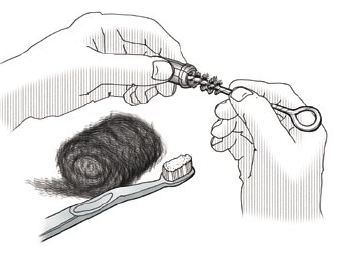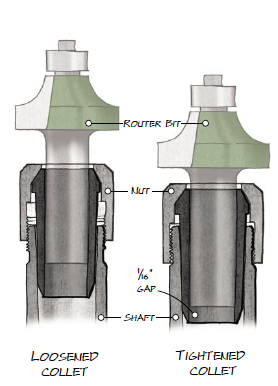We may receive a commission when you use our affiliate links. However, this does not impact our recommendations.
Proper Collet Maintenance
•As with most tools, parts that have metal-to-metal contact, or are in contact with dust and pitch, will wear over time or require maintenance. Worn, scratched, dirty or out-of-round collets will not provide adequate holding power and can increase run-out and vibration.
• To extend the life of your collet, never tighten a collet without a bit in place. This can compress or deform the collet, leading to an improper fit on the bit.
Pitch and dust can build up in and on the collet, as well as in the recess of the shaft and inside the collet nut. A simple cleaning every so often will ensure a tight fit on the bit.

Think of the collet as a consumable item in your router. Much like the brakes on your car, the collet will wear and become less efficient over time. If you notice problems holding bits, it may just be time to replace the collet.
• Clean the collet parts with a rag dampened with a cleaning solution such as Naptha.
• Use a small brush with either nylon or brass bristles to reach into close areas. These bristles will clean the collet without damaging the metal surfaces.
• Use #0000 steel wool or a synthetic scouring pad to remove burrs or nicks from the collet. Don’’t use sandpaper;; this will only add scratches to the collet.
• A bronze cleaning brush commonly used for gun cleaning will also help smooth out damaged surfaces.
– From the Autumn 2006 issue of Woodworking Magazine; illustrations by Matt Bantly
Here are some supplies and tools we find essential in our everyday work around the shop. We may receive a commission from sales referred by our links; however, we have carefully selected these products for their usefulness and quality.










I have a Dewalt router (734) which sticks the router bit in the collet,- everytime. The friction is so high I have to pry the router bit out with the collet and then I can separate the bit from the collet. any suggestions?
Another, and important, reason for the 1/16th inch gap at the base of the collet is to allow for expansion as the bit heats up. The same concept applies to any bit installed in a machine tool e.g., drill bit.